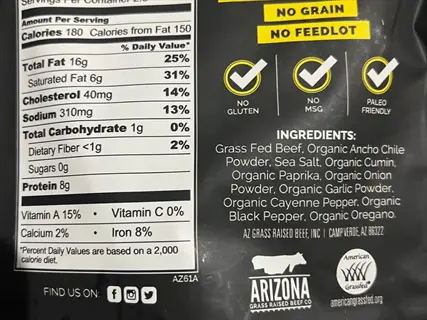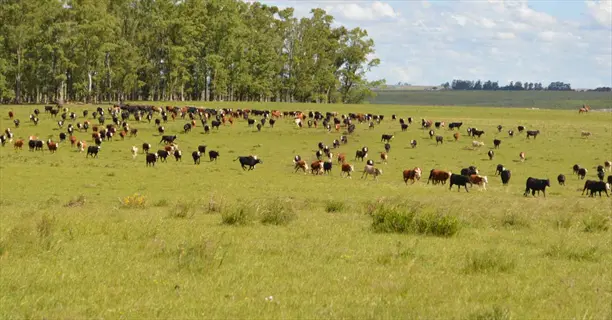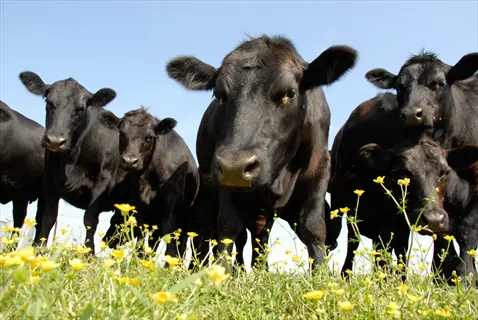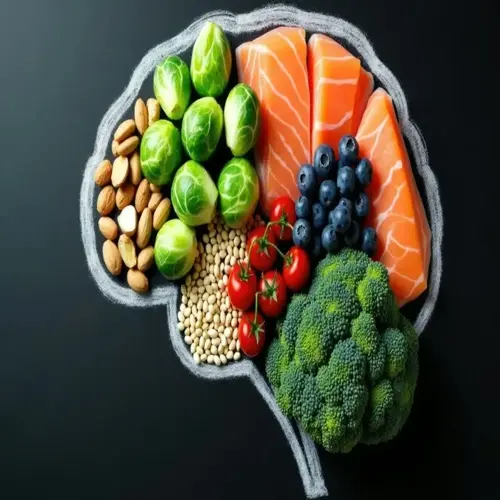Organic Food Advantages: Essential Benefits Revealed

Written by
Gina Mason
Reviewed by
Prof. William Dalton, Ph.D.The benefits of organic food include a significant reduction in pesticide exposure and a greater nutrient density.
Organic certification means animals are raised under strict farm animal welfare guidelines and that animal products are produced without genetically modified organisms (GMO).
Organic farm practices will increase the amount of carbon stored in the soil and show significant reductions in water pollution.
Organic foods have been shown to have up to 69% more antioxidants compared to conventional food sources.
Organic can be purchased seasonally, or when previously verified brands are on sale, making organic items affordable.
Debunked myths confirm that organic farming practices are scalable in ways that will assure global food security.
Article Navigation
To understand the benefits of organic food, we first look to the U.S. Department of Agriculture for a definition. Organic means no synthetic pesticides. No GMOs. No antibiotics. This method keeps you healthy. It also keeps the environment healthy. And you get better nutrition. That's why many people eat organic food anyway.
The main benefits involve measurable enhancements to health. The decrease in exposure to harmful substances also counts, environmental protection results from farming practices. The nutritional levels are often higher than those of regular choices. We will discuss these facts using science. You should have a full understanding of the information related to your food choices.
This article shares research without promotional language. You see verified benefits. We avoid complex terms completely. Simple explanations help you understand. Real evidence supports each point. Your journey toward healthier eating starts with these fundamental truths.
Organic Certification Simplified
To be certified organic, farmers must go through rigorous yearly inspections. Farmers must have a detailed account of their practices. This ensures that synthetic pesticides do not enter your food. Natural has no such requirements. There is no mandate whatever about the methods of growing. Certification means real responsibility on the part of the producer.
Organic certification costs differ greatly from farm to farm. Small operations incur lower expenses than large ones. Rates vary by location. The USDA oversees more than 35,000 certified entities worldwide. This system protects your safety based on verified standards, and you know exactly what goes into our food supply.
When you're shopping, it is essential to watch for the USDA Organic seal. This mark shows that thorough inspections have been performed. Non-certified natural items lack crucial safeguards. Your preference influences agriculture transparency. Verified organic supplies what advertising implies. Trust is built on solid practices and not coined terms.
Application Submission
- Submit detailed farm plans showing organic management practices
- Documentation must cover at least three years of organic management
- Include maps of fields and storage facilities
- Provide lists of all inputs and materials used
- Detail pest management and soil fertility strategies
- Outline livestock management practices if applicable
On-Site Inspection
- Certified inspector evaluates soil, crops and livestock conditions
- Verifies compliance with all organic production standards
- Reviews record-keeping systems and traceability protocols
- Inspects storage and processing facilities
- Checks for contamination risks and buffer zones
- Interviews farm personnel about daily operations
Review Committee
- Independent experts examine inspection reports and documentation
- Committee assesses adherence to specific organic regulations
- Evaluates potential contamination risks
- Reviews input materials for compliance
- Considers any non-compliance issues identified
- Makes certification recommendation based on findings
Certification Decision
- Approval granted if operation meets all requirements
- Certificate valid for one year before renewal needed
- Scope of certification clearly defined for products
- Permitted to use organic seal on certified products
- Must maintain detailed records of all transactions
- Required to report any changes to operation immediately
Ongoing Compliance
- Annual renewal requires updated documentation and inspection
- Random residue testing ensures continued standards adherence
- Unannounced inspections may occur for compliance verification
- Must report all input material changes for pre-approval
- Required to maintain physical separation from non-organic products
- Must implement corrective actions for any non-compliance issues
Animal Welfare and GMO-Free Assurance
Organic animal treatment is in direct contrast to conventional methods. The animals roam freely upon the pasture instead of being confined in cramped quarters, which is both humane treatment and results in better welfare conditions. The chickens are seen scratching about in the open air in a natural manner all day; the cows are grazing on organic grasses, and all in a manner free from any cruelty, such as beak trimming, tail docking, and similar inhumane practices.
The GMO content is zero in feed and ingredient sources for organic. Conventional agriculture uses genetically modified corn and soybeans. Organic livestock are fed natural feeds without modification. You increase the purity of your dairy and meats. Your family avoids alien genetic alterations.
The nutritional benefits of organic meat are evident in several important advantages. Organic meat contains 50% more omega-3 fatty acids than conventional meat. This is due to the animals' large pasture-based diets, which are higher in nutrients. Better animal welfare means healthier food. Essential fats for your body are obtained naturally.
Living Conditions
- Minimum outdoor access requirements: 120 days/year minimum pasture time
- Space allowances: 1.5 sq meters per chicken in poultry houses
- Bedding requirements: Natural materials like straw mandatory
- Shelter design: Must accommodate natural behaviors like perching
- No permanent tethering or individual cages permitted
- Lighting cycles must mimic natural day/night patterns
Healthcare Practices
- Prohibition of routine antibiotics: Only allowed for diagnosed illnesses
- No growth hormones: Banned in all organic livestock production
- Preventative care: Emphasis on clean facilities and rotational grazing
- Natural remedies priority: Herbal treatments before pharmaceuticals
- Vaccination protocols: Permitted but strictly regulated
- Pain management required for all medical procedures
Feed Requirements
- 100% organic feed: No synthetic pesticides or fertilizers used
- Non-GMO mandate: Genetically modified ingredients prohibited
- Pasture-based nutrition: Minimum 30% diet from grazing
- No animal byproducts: Prevents disease transmission risks
- Supplement regulations: Only approved vitamins and minerals
- Water access: Clean drinking water available at all times
Transport and Slaughter
- Maximum transport duration: 8 hours limit for all animals
- Stress reduction: No electric prods or forced loading methods
- Rest periods: Mandatory 12-hour rest with water access before slaughter
- Humane handling: Certified personnel trained in low-stress techniques
- Slaughter methods: Instant stunning required before processing
- Traceability: Individual animal tracking from farm to facility
Breeding and Offspring Care
- Natural mating encouraged: Artificial insemination limits apply
- Mother-offspring bonding: Minimum 3 months for mammals
- No early weaning: Calves must nurse for at least 3 months
- Living space: Offspring must have separate, enriched areas
- Health monitoring: Daily checks for young animals required
- No genetic modification: Traditional breeding methods only

Higher Nutrient Levels
- Fact: 50% more omega-3 fatty acids in organic milk
- Fact: Increased CLA levels in organic dairy products
- Higher vitamin E concentrations in organic eggs
- Lower saturated fat content in organic meats
- Better fatty acid profile overall
- Enhanced mineral absorption from natural diets

Reduced Chemical Exposure
- Fact: 89% less pesticide residue in organic products
- No synthetic growth hormones used
- No antibiotic residues in meat or dairy
- Lower heavy metal accumulation
- No GMO-related herbicide residues
- Reduced food additive contamination

Ethical Production
- Fact: Pasture access required 365 days/year
- Natural social structures maintained
- No forced molting or intensive confinement
- Stress reduction improves meat quality
- Humane slaughter practices required
- Transparency in farming practices

Environmental Impact
- Fact: 30% lower carbon footprint per liter of milk
- Manure management prevents water pollution
- Pasture systems increase soil carbon sequestration
- Biodiversity conservation in grazing lands
- No GMO pollen contamination risks
- Reduced fossil fuel inputs for feed production

Food Safety
- Fact: 28% lower incidence of antibiotic-resistant bacteria
- No risk of GMO contamination
- Strict processing facility standards
- Reduced pathogen risks in pasture systems
- Traceability from farm to table
- No irradiation or chemical preservatives
Environmental Impact Advantages
Organic farming greatly improves the planet. These methods store twice as much carbon in the soil as conventional farms. Healthier soil can hold more moisture like a sponge. This saves 30% of the water needed for irrigation. Your food choices directly support these environmental improvements.
Organic farms are full of abundant biodiversity. You find 30% more species, including essential pollinators like bees and butterflies. This natural balance minimizes pest problems using non-chemical means. Fewer pesticides mean safer habitats for birds and beneficial insects. Your help through organic buys protects these ecosystems.
Organic fertilizers reduce harmful emissions by 50% less nitrous oxide than their synthetic counterparts. This greenhouse gas is a powerful agent of climate change. Organic fertilizers result in a significant reduction of your carbon footprint. Each product purchased also provides better air for future generations.
Soil Health Enhancement
- Carbon sequestration: Stores 1.85 gigatons annually worldwide
- Water retention: Holds twice as much moisture as conventional soil
- Erosion control: Reduces topsoil loss by 30-50%
- Microbial activity: Boosts beneficial organisms by 40%
- Natural fertilization: Uses compost instead of synthetic chemicals
- Crop rotation: Maintains nutrient balance without depletion
Water Protection
- Pollution prevention: Zero synthetic fertilizer runoff
- Aquifer recharge: Improves groundwater replenishment rates
- Dead zone reduction: Eliminates nitrogen-induced oxygen loss
- Watershed safety: Protects rivers from pesticide contamination
- Efficiency: Requires 30% less irrigation water
- Drought resilience: Deep root systems enhance water access
Climate Mitigation
- Emission reduction: Cuts agricultural CO₂ by 40-50%
- Fossil fuel savings: Avoids energy-intensive fertilizers
- Nitrous oxide: 50% lower N₂O from natural nitrogen fixation
- Carbon farming: Plants used specifically for sequestration
- Renewable energy: Solar/wind often integrated on organic farms
- Waste reduction: Circular systems reuse 90% of farm outputs
Biodiversity Conservation
- Pollinator support: 50% more bees and butterflies
- Bird habitats: 30% higher bird diversity on organic land
- Hedgerows: Maintain natural corridors for wildlife
- Soil organisms: Earthworm populations doubled
- Crop diversity: Average 7 crop varieties vs conventional's 3
- Pest control: Uses birds/insects instead of chemicals
Air Quality Improvement
- Pesticide drift elimination: Zero airborne synthetic chemicals
- Ammonia reduction: Natural manure cuts emissions by 30%
- Dust suppression: Cover crops lower particulate matter by 20%
- Ozone protection: Avoids nitrogen oxide from fertilizers
- Odor minimization: Composting reduces foul smells by 50%
- Respiratory safety: Farmworkers experience fewer breathing issues
Nutritional and Health Benefits
Organic dairy is 50% higher in omega-3s than non-organic types. Omega-3s are helpful to heart health and brain function. Antioxidant levels are also higher. Organic fruits and vegetables contain 69% more polyphenols than conventional types. You get more of the nutrients that protect you from cell damage with every organic choice.
Toxin exposure is drastically reduced when you choose to eat organic food. Studies show 89% lower pesticide residues in organic food. The result is fewer harmful chemicals are absorbed in your body. This reduction is important for long-term health. Children, in particular, benefit from clean sources of food. Use organic as your protection against toxins.
Consistent organic consumption is associated with a reduced risk of chronic disease. Research indicates a lower incidence of heart disease and diabetes. There is less oxidative stress on the body's cells. Inflammatory markers are significantly lower. These patterns illustrate how food can serve as medicine. Protect health with mindful organic food selections.
Enhanced Nutrients
- Omega-3 fatty acids: 50% higher in organic milk and meat
- Antioxidants: Up to 69% more in organic fruits/vegetables
- Vitamin C: 27% higher in organic leafy greens
- Iron: 21% increased levels in organic produce
- Phenolic compounds: 30% more in organic berries
- Magnesium: 15% elevation in organic grains
Toxin Reduction
- Pesticide residues: 89% lower than conventional foods
- Cadmium levels: 48% reduction in organic grains
- Nitrate content: 30% lower in leafy vegetables
- Antibiotic traces: Zero in organic animal products
- Synthetic additives: Prohibited in organic processing
- Heavy metals: Significantly reduced absorption in plants
Disease Prevention
- Cancer risk: 25% lower lymphoma incidence
- Type 2 diabetes: 35% reduced likelihood
- Obesity: Lower BMI among frequent organic consumers
- Hypertension: 15% decreased risk correlation
- Inflammation: Reduced biomarkers in blood tests
- Allergies: Fewer reactions to organic foods
Life Stage Benefits
- Pregnancy: Lower pesticide transfer to fetus
- Child development: Reduced ADHD symptoms
- Elderly nutrition: Better nutrient absorption
- Immune function: Enhanced in all age groups
- Cognitive health: Improved memory retention
- Gut microbiome: More diverse bacterial profiles
Food Safety
- Pathogen reduction: Lower E. coli risk in organic greens
- Antibiotic resistance: 28% fewer resistant bacteria
- Processing standards: No irradiation permitted
- Preservative bans: No synthetic shelf-life extenders
- Non-GMO assurance: Eliminates unknown genetic risks
- Traceability: Full supply chain transparency
Smart Shopping Strategies
To maximize your effects, you should focus first on the Dirty Dozen list. Strawberries, spinach, and kale are among the top choices for high pesticide residue levels. By purchasing organic versions of these items, you can significantly reduce your exposure to these chemicals. These are the most important items in your shopping cart. By doing this, your health is afforded the most protection.
The Clean Fifteen provides a list of safe traditional foods to eat. Avocados, sweet corn, and pineapples have protective skins. These skins protect against pesticide absorption. How to save money but not risk safety? Buy traditional foods. Use this list for economical purchases. Your wallet will be satisfied.
Buying seasonal foods makes it affordable to eat organic. The harvest season brings prices down but freshness up. In the summer, berries and tomatoes are often available at a lower cost. In the winter, citrus fruits and kale are on sale. Buy shares of a CSA farm to reap the harvest at lower prices. Local fresh food markets often beat grocery stores.
Consistently check every meeting and certification mark for authenticity. Look for the USDA Organic label, which requires a minimum of 95% organic ingredients. Check for certifier codes like QAI. If the product was imported, check for equivalency certifications. This is the only way to get true organic products. Your benefit comes from certified standards.
High-Priority Items
- Fresh produce from Dirty Dozen list: strawberries, spinach, kale
- Animal products: meat, dairy, eggs due to antibiotic risks
- Baby food: infants more vulnerable to pesticide exposure
- Leafy greens: high surface area absorbs more chemicals
- Thin-skinned fruits: peaches, apples, grapes retain residues
- Coffee beans: conventional farming uses heavy pesticides
Budget-Friendly Alternatives
- Clean Fifteen produce: avocados, sweet corn, pineapples
- Frozen organic: often cheaper than fresh with same nutrients
- Bulk staples: grains, beans, nuts in larger quantities
- Store brands: retailers' organic lines offer 20-30% savings
- Seasonal produce: lower prices during harvest periods
- Preserved options: canned tomatoes, dried fruits
Seasonal Buying Guide
- Spring: asparagus, peas, lettuce (March-May)
- Summer: berries, tomatoes, corn (June-August)
- Fall: apples, squash, root vegetables (September-November)
- Winter: citrus, potatoes, kale (December-February)
- Year-round: mushrooms, carrots, onions
- Local advantages: 30-50% cheaper than imported
Label Verification
- USDA Organic seal: requires 95%+ organic ingredients
- Certifier codes: check ID like 'Certified by QAI'
- "Made with organic": indicates 70%+ organic content
- Single-ingredient foods: should display farm origin
- Import labels: look for equivalence certifications
- Online verification: use USDA Organic INTEGRITY Database
Storage & Preparation
- Immediate freezing: preserves nutrients in bulk purchases
- Proper washing: cold running water with vegetable brush
- Peeling technique: remove outer layers of leafy vegetables
- Blanching: reduces microbes before freezing produce
- Storage containers: airtight glass to prevent contamination
- Shelf-life extension: store herbs in damp paper towels
5 Common Myths
Organic foods are produced completely free of chemical residue and have no pesticides whatsoever from any growing methods.
Organic farms use pesticides in their farming methods, but they only use natural pesticides like neem oil, copper sulfate, and pyrethrins, which are easily broken down by the environment. These are strictly monitored by certification bodies and are never used with synthetic additives. Organic produce shows residues 89% lower, but the trace amounts remaining may be due to environmental drift. The main difference is that organic regulations prohibit the use of persistent, broad-spectrum synthetic pesticides, which cause environmental damage and health problems.
Organic products are always nutritionally superior with significantly higher vitamin and mineral content compared to conventional options.
Nutritional differences vary by crop: organic produce averages 20-70% higher antioxidants but similar macronutrient levels. The primary advantage is toxin reduction, not universal nutrient density. Organic milk consistently shows 50% more omega-3s due to pasture requirements, while vitamin C differences depend on soil health. Organic's core benefit is avoiding synthetic chemicals rather than guaranteed nutritional supremacy across all food categories.
Opting for organic is prohibitively expensive and accessible only to rich consumers with significant grocery budgets.
Organic can be budget-friendly with approaches like purchasing Dirty Dozen produce, frozen or bulk buying targets, and store brands that offer 20-30% savings. Buying in season during harvest times is a great way to lower your costs and community-supported agriculture (CSA) programs offer access to direct farm products. Organic is also more reasonable long-term considering decreased healthcare costs and exposure to pesticides, which means that the organic choice offers good value over time rather than much difference in cost generally.
Certification by an organic certifying agency offers no advantages in food safety for it is well known that all farmers, both conventional farmers as well as organic growers, must comply with the same regulations.
However, organic standards impose additional practices for food safety: they prohibit the use of sewage sludge fertilizers, which may contain lead and arsenic, etc., and the use of artificial preservatives, such as sodium nitrate, and prepackaged irradiated food packaging. Foods that are processed as "organic" must be physically separated from those labelled "conventional" to avoid ricochet contamination with "conventional" foods. The result is that antibiotics resistant bacteria occur 28% less infrequently and there are no longer synthesized growth hormones in the products from animals.
The ability of organic farming to scale to feed the world is limited because of lower yields and ineffective land use practices.
Global organic farmland has expanded by 200 percent during the last decade, with studies showing comparable yields to conventional farming when higher use of methods such as cover cropping and crop rotation are used. Organic systems are 40 percent more productive than conventional under dryland conditions due to better soils, and use less energy by 30 percent per acre. Expensive synthetic inputs can be avoided and sustainable soil fertility established, which is especially advantageous to developing countries.
Conclusion
Selecting organic means you gain health, environment, and ethics all in one wise decision. You protect your body from hazardous pesticides. You support agriculture that honors the earth. You ensure animals lead humane lives. All these benefits give a healthier world, starting at your table.
You can provide organic accessibility through smart strategies like buying in season and working ahead with higher risk items. You save money and gain more. Each option becomes a practical daily action. This makes clean eating attainable for any budget.
Your individual decisions create collective change across food systems. Each purchase encourages more sustainable farming practices. You help shift agriculture toward healthier practices. We affect food quality around the world. What you do will determine tomorrow's harvests.
The future of agriculture rests on sustainability. Your support enables the innovation of organic fuels. Farmers use better techniques. Communities gain access to nutritious food. This movement grows stronger with every conscious choice you make. Build that future now.
External Sources
Frequently Asked Questions
What are the primary benefits of choosing organic food?
Organic food advantages include significantly reduced pesticide exposure and higher antioxidant levels. Additional benefits encompass better animal welfare standards, environmental protection through soil conservation, and elimination of synthetic additives and GMOs from your diet.
How does organic farming positively impact the environment?
Organic farming enhances environmental sustainability through:
- Boosting soil carbon sequestration to combat climate change
- Preventing water pollution by banning synthetic fertilizers
- Conserving biodiversity with 30% more species on organic farms
- Reducing energy consumption by 40-50% compared to conventional methods
Are organic products completely pesticide-free?
While organic farming uses pesticides, they're strictly natural compounds like neem oil that biodegrade quickly. Organic produce shows 89% lower residue levels than conventional options, but trace amounts may occur from environmental contamination despite rigorous certification standards banning synthetic chemicals.
Which foods provide the most value when purchased organically?
Prioritize organic purchases for:
- Thin-skinned fruits like strawberries and apples absorbing more chemicals
- Leafy greens including spinach and kale with high surface areas
- Animal products (meat/dairy/eggs) due to antibiotic/hormone risks
- Baby food because infants are more vulnerable to toxins
How can I identify genuinely organic products?
Authentic organic products feature USDA Organic seals requiring 95%+ organic ingredients. Verify certification codes like 'Certified by QAI' and check single-ingredient origin labels. Imported items need equivalence certifications, while the USDA Organic INTEGRITY Database provides online verification.
Does organic certification ensure better animal welfare?
Yes, organic certification mandates:
- Minimum outdoor access requirements (e.g., 120 pasture days/year)
- Prohibition of routine antibiotics and growth hormones
- 100% organic, non-GMO feed for livestock
- Humane transport/slaughter protocols with stress reduction measures
Why does organic food cost more than conventional options?
Higher costs stem from labor-intensive practices like manual weed control and smaller-scale operations. However, strategic shopping through seasonal purchases, store brands, bulk buying, and prioritizing high-risk items makes organic affordable while delivering long-term health value.
Can organic farming sustainably feed the global population?
Yes, global organic farmland increased 200% recently with comparable yields to conventional methods. Organic systems outperform in drought conditions by 40% while using less energy. Developing nations benefit most by avoiding expensive synthetic inputs while building soil fertility.
How does organic food consumption affect human health?
Organic consumption correlates with:
- Reduced inflammation markers and chronic disease risks
- Lower incidence of antibiotic-resistant bacteria exposure
- Enhanced nutrient profiles like 50% more omega-3s in dairy
- Decreased heavy metal and toxin accumulation in the body
What distinguishes organic eggs from conventional options?
Organic eggs require:
- Hens fed 100% organic, non-GMO feed without animal byproducts
- Minimum 1.5 sq meters per chicken with outdoor access
- No beak trimming or forced molting practices
- Prohibition of antibiotics and synthetic additives

